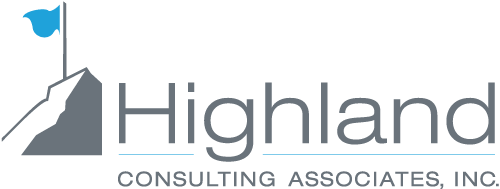Employee Stock Ownership Plan (ESOP): A Solid Financial Future

An employee stock ownership plan (ESOP) is an employee benefit plan that provides employees with ownership interest in their company. The ESOP is implemented via a trust, where the trust is the owner of the company shares and employer ESOP plan participants are the beneficiaries of the trust.
Liquidity Needs Required by ESOP’s
Over time, participants in the ESOP will require that their interest in the ESOP shares be repurchased to meet distribution requirements.
While some of the requirements for share repurchase can be planned ahead of time – such as a retirement – other events such as resignations and dismissals are more unexpected and may result in the trust, or the company, to meet the cash requirements. Other circumstances where employees can require liquidity from the ESOP include hardships and diversification rights allowed by plan provisions and by regulation.
Diversification rights take effect once a participant meets both the plan’s age and service requirements and involves the employee selling shares and using the proceeds to invest in other assets.
Generally, ESOP plan provisions dictate when and how terminated participants must begin receiving proceeds from their portion of ESOP shares. Traditionally, ESOPs must be in a position to begin repurchasing shares no earlier than 1 year, and no later than six years after the participant’s termination.
Preparation for these liquidity requirements can be achieved several ways, each with their own implications:
- Use cash held on the company’s balance sheet. Depending on the size of ESOP repurchases this cash need may become a major drag on profitability and corporate returns.
- Creating a reserve fund. The reserve fund is capitalized by the ESOP sponsoring company and as employee repurchases occur the reserve fund provides needed cash.
- Other funding sources include borrowing to generate cash and purchasing corporate owned life insurance.
Illustrating Liquidity Challenges
As an example of the need for funding and liquidity planning around ESOP purchases, below is a graph depicting a hypothetical company that is 100% ESOP owned and has operating earnings that are insufficient to meet distributions.

This company earns $10 per year; the appraised company is valued at 10 times earnings and is thus worth $100. If we assume that employees leave and sell 10% of total ESOP shares held, the company is required to pay out $10. This equates to a full year of earnings.
If employees leave and/or retire and in the process sell 20% of the shares held, the company now is required to pay out $20, or 2 years of worth of earnings.
Even if these potential obligations are paid in installments over a number of years, repurchase obligations can require a meaningful portion of ongoing cash flow and earnings.
Investing Alternatives to Cash
Although holding ESOP reserves in cash is common, a low yield environment results in a potentially poor use of capital and drag on profitability.
Just a few years ago, financial officers could expect to earn yields of 4% or more on cash reserves. Today’s yields on short term cash barely exceed zero and do not cover inflation.
 By taking on some credit and/or duration risk, yields can be increased and provide additional returns. As the chart below shows, this additional yield comes with the possibility of negative price impacts. Investors must perform a balancing act of managing investment returns and also managing risk.
By taking on some credit and/or duration risk, yields can be increased and provide additional returns. As the chart below shows, this additional yield comes with the possibility of negative price impacts. Investors must perform a balancing act of managing investment returns and also managing risk.

Assets other than fixed income may also be appropriate when included in a portfolio context. The same balancing act exists in other markets as well: additional return is usually accompanied by accepting additional risk.
 As demonstrated in the graphs below, although additional asset classes may provide increased returns, their higher risk should be considered in the context of how large a possible market drawdown the company is willing to experience in the portfolio. Therefore, the composition of this portfolio of risky assets should be determined based on the ability and willingness of the organization to bear various levels of investment decline.
As demonstrated in the graphs below, although additional asset classes may provide increased returns, their higher risk should be considered in the context of how large a possible market drawdown the company is willing to experience in the portfolio. Therefore, the composition of this portfolio of risky assets should be determined based on the ability and willingness of the organization to bear various levels of investment decline.
 A final consideration in forming a portfolio of reserve assets is the relationship between the company’s business and the returns of its investments.
A final consideration in forming a portfolio of reserve assets is the relationship between the company’s business and the returns of its investments.
Consider two different businesses: a steel manufacturer’s profits will have a strong link to commodity prices and overall economic activity, while the profits of a service firm will have little to no relationship with commodity prices.
A steel manufacturer that invests in assets that are commodity sensitive may be “doubling down” on its risk. An upturn in the market may benefit both the reserve fund and the company stock value. Likewise downturn in the market may reduce the value of both.
Summary
ESOPs are an excellent way for employees to participate in the success of a company, while simultaneously offering numerous benefits to employers and owners. ESOPs periodically are required to repurchase shares from participants and ESOP companies should evaluate and model the potential repurchase liabilities.
In conjunction with the study of these repurchase requirements (or liabilities), companies should develop advance plans for how to fund them. Often this funding plan will involve creating reserves in advance.
As part of this process, investors face an important balancing act. Holding assets in cash ensures principal value and liquidity when shares need to be purchased.
However, in recent years cash has become a poor returning asset to hold. Options exist for investors to improve their return expectations but they should carefully consider issues such as risk and the correlation of investments to the overall enterprise.



